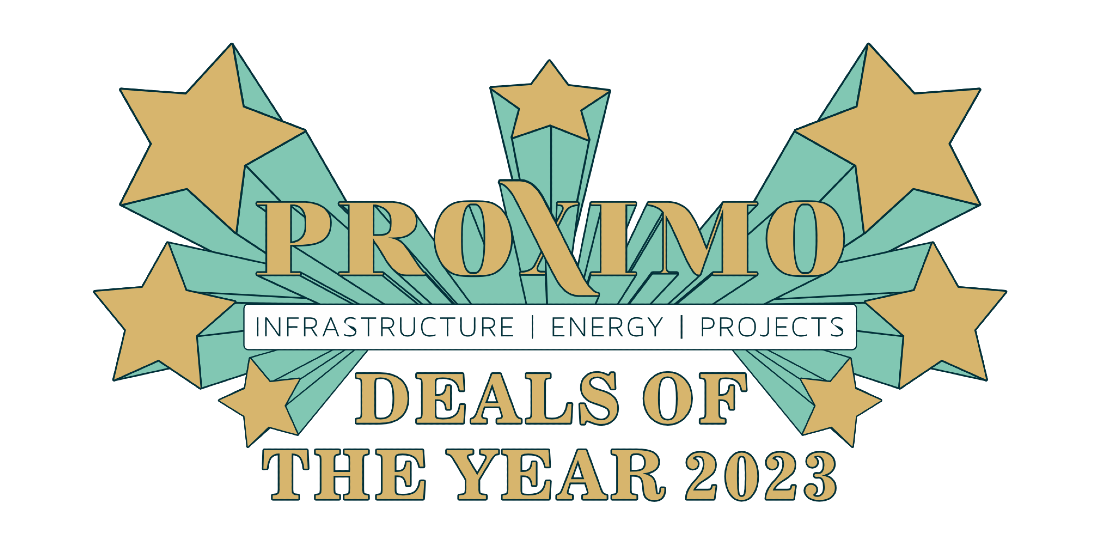Proximo Weekly: What cost capital in 2022?
With a considerable number of headwinds expected to push up the cost of US project debt in 2022, last year was probably the year to refinance.

The Federal Reserve is expected to start raising interest rates as early as March this year, so Norton Rose Fulbright’s annual Cost of Capital webinar last week could not have been better timed.
With a panel of industry experts (see below), the webinar considered the impact of the many significant headwinds facing the project market – broken supply chains, customs seizure of solar panels, rising inflation (which has hit 7%), skyrocketing insurance premiums and tax law uncertainty – and some of the opportunities, notably energy transition.
Tax equity
Given the tax law uncertainty and supply chain issues, panellists predictions for volume in the tax equity market are tentative. Total volume for 2021 was between $19 and $20 billion dollars, split roughly 50:50 between wind and solar, which is consistent with the trend towards large scale solar projects. Expectations for 2022 are for a $20 billion volume (+ or - 5%) and a similar split between wind and solar. Demand for tax equity continues to be particularly strong in the solar plus storage sector.
A continuing expected trend is that most tax capacity is already spoken for by the summer – for example, Bank of America has already allocated approximately 80% of its capacity for this year. In terms of the percentage of capital stack for any given project, tax equity last year made up roughly 35% for solar and 65% for wind (+ or - 10%), and the same percentages are expected for this year. Although, if the Build Back Better Bill provisions get passed then these figures could change. Tax equity investors are struggling to establish contingency plans in response to the complexities of the bill.
Financial close on offshore projects is expected to be rare in 2022, with most projects in the pipeline being between two and five years away. There are split opinions as to the proximity of carbon capture tax equity deals with some confident that 2022 will see several large deals and others apprehensive that any large deals will be made in the next two years.
Bank debt
The bank market has appeared to settle back into a pre-Covid pattern, with plenty of liquidity and strong lending appetite from both traditional lenders and small regional banks. The number of banks estimated to be active in the market in 2021 is about 100, and similar if not higher figures are predicted for 2022.
Drawn by appetite for ESG, existing fund managers have been joined by new fund managers and limited partner investors that are choosing to become direct lenders themselves. Several banks have also signed up to sustainable financing and are focusing on buying renewable exposure, with some turning down thermal activity to look to ESG. Investors are getting a lower cost of capital when it comes to an ESG type of exposure, and consequently there’s a growing focus on decarbonisation and carbon storage.
The volume of project finance debt this year is expected to continue on the current down trend. The current spread above the benchmark for bank debt varies, but the market is still tightening with pricing as low as Libor-plus-1%. That said, commercial bank debt appetite is increasing, and banks seem willing to take down holding company paper at even tighter prices. Commercial banks are the cheapest lenders and will continue to be going into 2022. In recent years loan tenors have been between five and seven years and there’s no real change expected although, there can be a much longer tenor for renewables (typical renewables deals, especially in Canada, can get up to 19-year tenors).
Term loans
In the institutional debt market, the average spread for loans is 415 basis points for a yield of 5.46%. The market had a volume of $611 billion dollars in 2021. This is more than double its value in 2020, although volume is expected to plateau somewhat this year. Average tenors are expected to remain at about seven years although there could be a higher demand for near to full repayment on B loans, with several recent deals having seen a 75% repayment.
Project bonds
The size of the project bond market in the power sector was estimated to be down by 10% last year. With a 7% inflation rate, there may be a decreased interest in projects in the power sector going into this year, and getting the cost of capital locked in for a long period of time will be more attractive than ever.
The types of deals that will use project bonds are those where there is long term revenue visibility (recent examples have been hydro-electric projects), although lenders are looking constructively to merchant cash flows. The project bond market is currently a tough environment for mid-stream issuers as investors are being tracked on the carbon footprint of their portfolios, so gas projects, which would damage this, are struggling for capital availability.
Panellists:
- Keith Martin (moderator), partner at Norton Rose Fulbright
- John Anderson, global head of Corporate Finance & Infrastructure at Manulife
- Jack Cargas, managing director and head of Tax Equity Origination at Bank of America
- Ralph Cho, co-head of Power & Infrastructure Finance at Investec
- Max Lipkind, head of Americas Leveraged Finance Origination at Credit Suisse
- Rubiao Song, head of Energy Investments at JP Morgan
Selected news articles from Proximo last week
NORTH AMERICA
Vistra plans Phase III of Moss Landing storage site
Vistra (VST) plans to further expand its Moss Landing Energy Storage Facility in Moss Landing, California and has entered into a 15-year resource adequacy agreement with Pacific Gas and Electric Company (PG&E) for a new 350MW/1,400MWh battery system.
EUROPE
Germany launches solar and biomass tenders
Bundesnetzagentur, the German Federal Network Agency, has launched two tenders seeking to allocate 1.1GW of solar and 274MW of biomass capacity.
ASIA-PACIFIC
Banks submit proposals for A$30bn Sun Cable project
Sun Cable is understood to have received responses to a request for proposal issued over the Christmas break to major investment banks and advisory firms operating in Australia and Singapore.
MIDDLE EAST & AFRICA
More details on Red Sea utilities financing
Further details have emerged on the financing of The Red Sea Project utilities PPP project in Saudi Arabia.
SOUTH AMERICA
Four line up for Colombian road concession
Colombia's National Infrastructure Agency (ANI) has received four proposals in the tender for the 18km Accesos Norte 2 highway project.
The Proximo Membership
Join a brand new community of project finance professionals getting unrivalled access to unique analysis, market data and a global portfolio of expert industry events in the energy and infrastructure space. Click here to find out more





